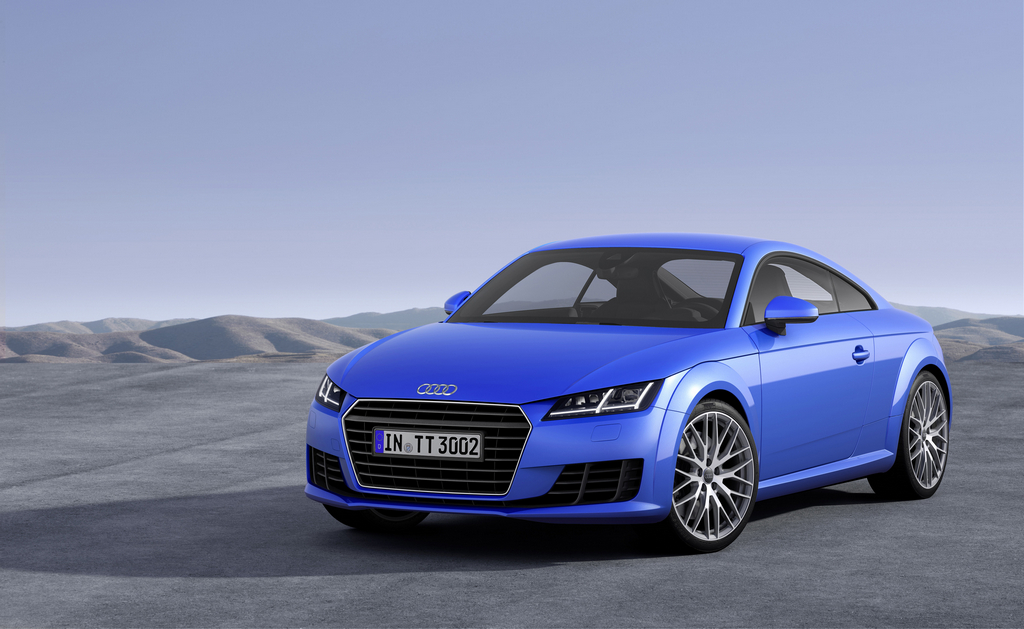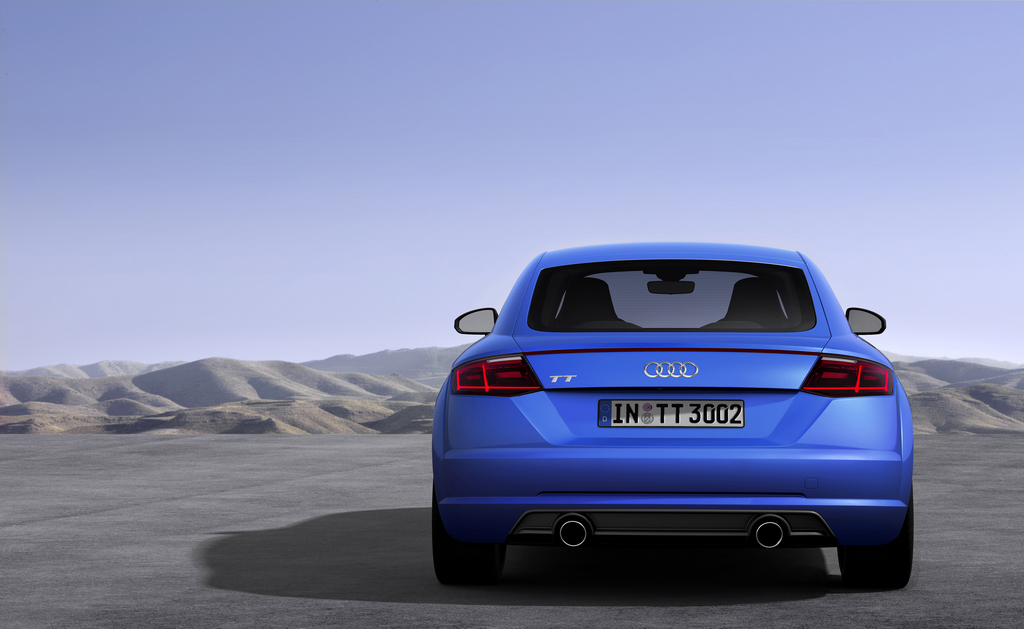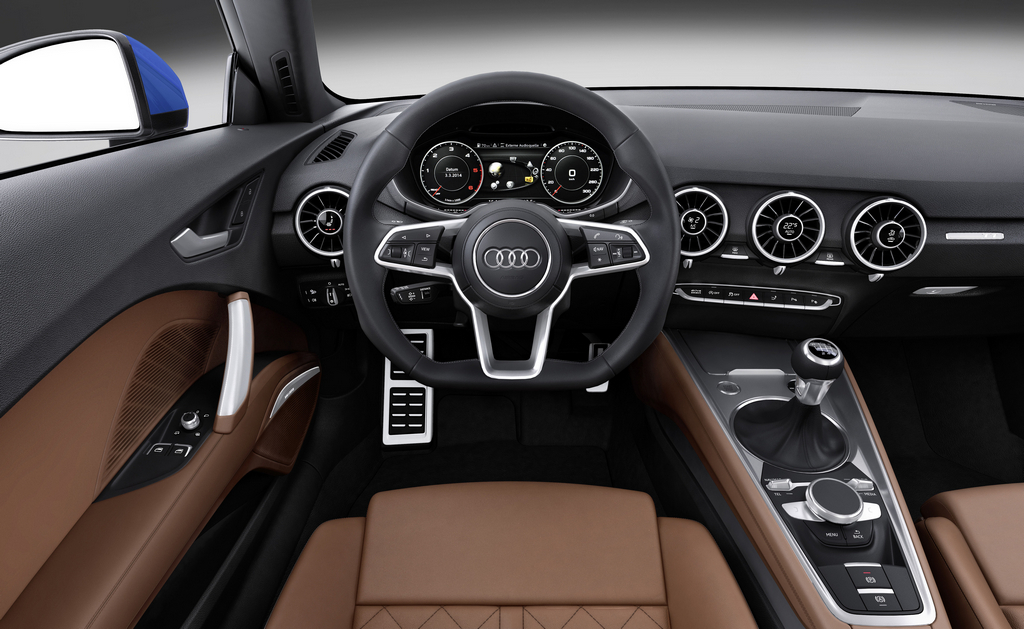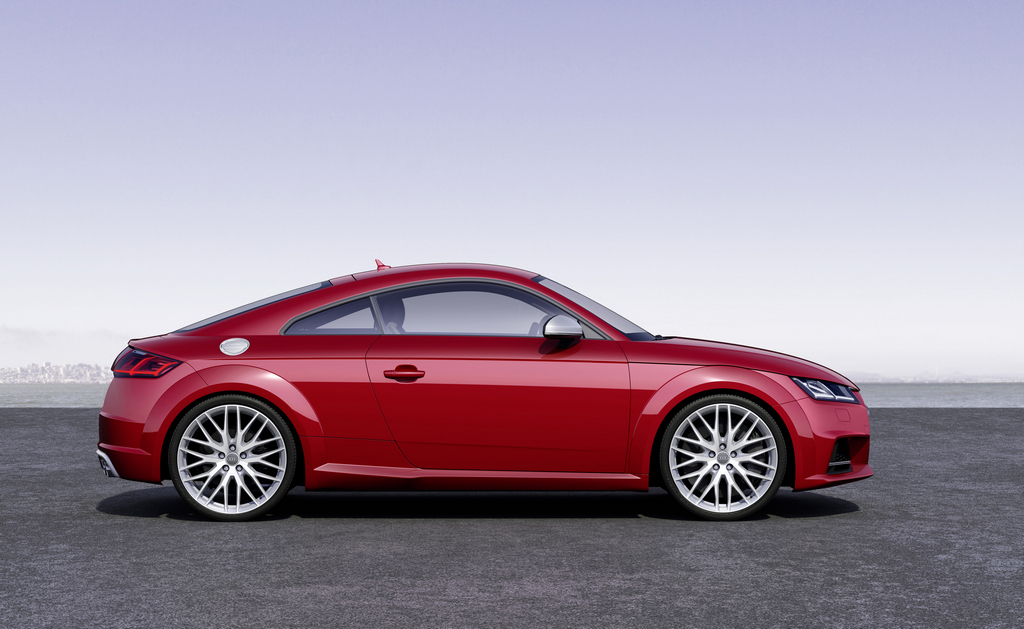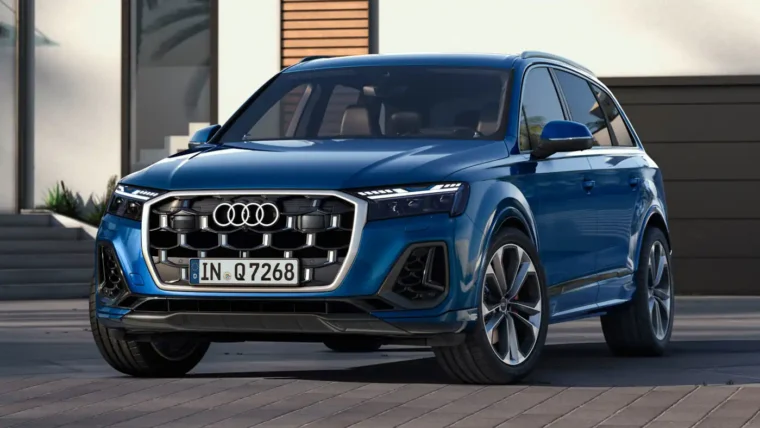Audi has revealed the latest 3rd generation Audi TT Mk3 at the Geneva Motor Show and boy, does it look handsome! The lines look sharper and the new LED headlights are rather unique and also sexy in a way. Take a cue from the previous design, the car looks a lot manlier and perhaps it can shake off it’s reference as a hair dresser’s car in the UK.
“The Audi TT is the epitome of an authentic design icon and a top-performance driving machine,” explains Prof. Dr. Ulrich Hackenberg, Member of the Board of Management of AUDI AG for Technical Development. “With the new generation, we are making this technology even easier for the driver to experience – just as they would expect from a real sports car.”
So what else is new besides the look of the car? The grill looks amazing and coming standard with the car would be xenon headlamps. As an additional option, customers can also choose the new Audi Matrix LED technology. The Matrix LED headlights consist of 12 LEDs and include another Audi innovation: dynamic turn signals that light up sequentially in the direction in which the driver is steering. The predictive cornering light uses navigation data to move the cone of light into the curve before the steering wheel is turned. The dynamic turn signals sound cool!
Length-wise the car still maintains the same length of 4.18 meters, but the new TT has a larger wheel base of an additional 37mm to 2,505mm. It is 1,832 mm wide, and has the same height as the previous model at 1,353 mm. Together with the LED and Audi Matrix LED headlights, the tail lights also have dynamic turn signals. Another parallel to the front headlights: the strip in the tail lights, which also form a daytime running light contour – another Audi innovation. The third brake light is an extremely narrow strip positioned under the edge of the rear spoiler. It plays an essential part in defining the tail light silhouette.
At a speed of 120 km/h a spoiler extends from the trunk lid to improve both air resistance and downforce. All models have two large round exhaust tailpipes. These are again reminiscent of the original TT. Like all Audi S models, the TTS exhales through four oval tailpipes.
The Audi engineers have, for the second time in a row, succeeded in significantly reducing the unladen weight of the Audi TT. At the first model change in 2006, up to 90 kg were saved, and the 2.0 TFSI engine variant of the new TT weighs just 1,230 kg. This makes it around 50 kg lighter than its predecessor.
The rule was once again: “less is more.” Clear, purist lines underscore both the lightness and the uncompromising sportiness of the Audi TT’s interior. Two other ingenious design and technically innovative tricks enabled the designers to create an instrument panel that is impressively slender: The instrument cluster and the MMI screen have been combined to form a central, digital unit – the so-called Audi virtual cockpit. In addition, the controls for the air conditioning system are positioned directly in the air vents.
Seen from above, the instrument panel resembles the wing of an aircraft; the round air vents – a classic TT feature – are reminiscent of jet engines with their turbine-like design. The vents also contain all the controls for the standard air conditioning system and the optional automatic air conditioning system (standard in the TTS). The controls for seat heating, temperature, direction, air distribution and air flow strength are located at their center; the setting selected is shown on small displays in the automatic air conditioning system. The horizontal control panel is located under the central air vents. The 3D-designed toggle switches activate the hazard warning lights, Audi drive select and the assistance functions.
Power wise the car now comes in 3 variants, a 2.0 TDI diesel version producing 184hp and 380Nm of torque with a 0-100 time of 7.2 seconds, a 2.0 TFSI petrol engine producing 230hp and 370Nm, achieving the century sprint in 6.0 seconds (5.3 seconds for models with the S-tronic gearbox and quattro technology) and a 2.0 TFSI version for the TTS producing 310hp and achieves the century sprint in 4.7 seconds.
There are 11 different wheel versions available. The TT 2.0 TFSI and the 2.0 TDI come as standard with 17” forged wheels in five-spoke design, each of which weighs only 8.7 kg (19.18 lb), and with size 225/50 tires. On request, Audi can supply other wheel designs with diameters of 17”, 18” or 19”, and tires up to 245/35 R19. quattro GmbH also offers wheels with a diameter of up to 20”.
The electronic stabilization control (ESC), which can be switched off either partly or completely, perfectly complements the car’s sporty handling. When driving through bends, torque vectoring takes effect. If required, the drive torque is distributed from the inside front wheel to the outside front wheel (front-wheel drive) or, on quattro models, to the rear wheels, too. Thanks to the difference in propulsive forces, the car turns very easily into the curve, which is helpful for the driver. In this way, bends can be navigated with great precision and neutrally. This significantly boosts the TT’s dynamism and stability. Sport mode supports particularly sporty driving, facilitating steering and control when drifting.
Other posts by AF Newsdesk

